Travelers 2006 Annual Report Download - page 51
Download and view the complete annual report
Please find page 51 of the 2006 Travelers annual report below. You can navigate through the pages in the report by either clicking on the pages listed below, or by using the keyword search tool below to find specific information within the annual report.-
 1
1 -
 2
2 -
 3
3 -
 4
4 -
 5
5 -
 6
6 -
 7
7 -
 8
8 -
 9
9 -
 10
10 -
 11
11 -
 12
12 -
 13
13 -
 14
14 -
 15
15 -
 16
16 -
 17
17 -
 18
18 -
 19
19 -
 20
20 -
 21
21 -
 22
22 -
 23
23 -
 24
24 -
 25
25 -
 26
26 -
 27
27 -
 28
28 -
 29
29 -
 30
30 -
 31
31 -
 32
32 -
 33
33 -
 34
34 -
 35
35 -
 36
36 -
 37
37 -
 38
38 -
 39
39 -
 40
40 -
 41
41 -
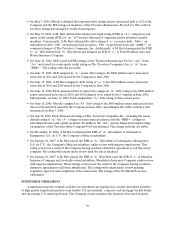 42
42 -
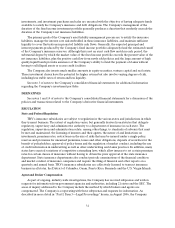 43
43 -
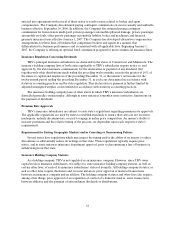 44
44 -
 45
45 -
 46
46 -
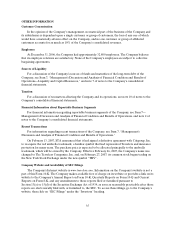 47
47 -
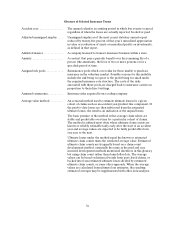 48
48 -
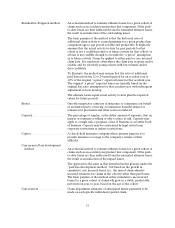 49
49 -
 50
50 -
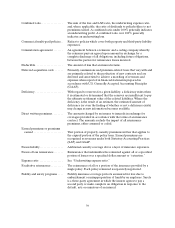 51
51 -
 52
52 -
 53
53 -
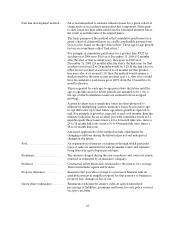 54
54 -
 55
55 -
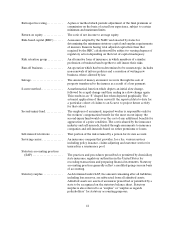 56
56 -
 57
57 -
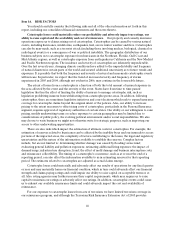 58
58 -
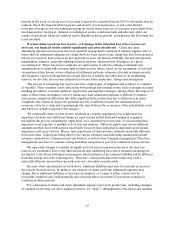 59
59 -
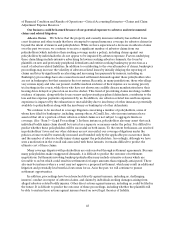 60
60 -
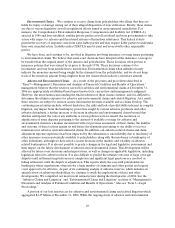 61
61 -
 62
62 -
 63
63 -
 64
64 -
 65
65 -
 66
66 -
 67
67 -
 68
68 -
 69
69 -
 70
70 -
 71
71 -
 72
72 -
 73
73 -
 74
74 -
 75
75 -
 76
76 -
 77
77 -
 78
78 -
 79
79 -
 80
80 -
 81
81 -
 82
82 -
 83
83 -
 84
84 -
 85
85 -
 86
86 -
 87
87 -
 88
88 -
 89
89 -
 90
90 -
 91
91 -
 92
92 -
 93
93 -
 94
94 -
 95
95 -
 96
96 -
 97
97 -
 98
98 -
 99
99 -
 100
100 -
 101
101 -
 102
102 -
 103
103 -
 104
104 -
 105
105 -
 106
106 -
 107
107 -
 108
108 -
 109
109 -
 110
110 -
 111
111 -
 112
112 -
 113
113 -
 114
114 -
 115
115 -
 116
116 -
 117
117 -
 118
118 -
 119
119 -
 120
120 -
 121
121 -
 122
122 -
 123
123 -
 124
124 -
 125
125 -
 126
126 -
 127
127 -
 128
128 -
 129
129 -
 130
130 -
 131
131 -
 132
132 -
 133
133 -
 134
134 -
 135
135 -
 136
136 -
 137
137 -
 138
138 -
 139
139 -
 140
140 -
 141
141 -
 142
142 -
 143
143 -
 144
144 -
 145
145 -
 146
146 -
 147
147 -
 148
148 -
 149
149 -
 150
150 -
 151
151 -
 152
152 -
 153
153 -
 154
154 -
 155
155 -
 156
156 -
 157
157 -
 158
158 -
 159
159 -
 160
160 -
 161
161 -
 162
162 -
 163
163 -
 164
164 -
 165
165 -
 166
166 -
 167
167 -
 168
168 -
 169
169 -
 170
170 -
 171
171 -
 172
172 -
 173
173 -
 174
174 -
 175
175 -
 176
176 -
 177
177 -
 178
178 -
 179
179 -
 180
180 -
 181
181 -
 182
182 -
 183
183 -
 184
184 -
 185
185 -
 186
186 -
 187
187 -
 188
188 -
 189
189 -
 190
190 -
 191
191 -
 192
192 -
 193
193 -
 194
194 -
 195
195 -
 196
196 -
 197
197 -
 198
198 -
 199
199 -
 200
200 -
 201
201 -
 202
202 -
 203
203 -
 204
204 -
 205
205 -
 206
206 -
 207
207 -
 208
208 -
 209
209 -
 210
210 -
 211
211 -
 212
212 -
 213
213 -
 214
214 -
 215
215 -
 216
216 -
 217
217 -
 218
218 -
 219
219 -
 220
220 -
 221
221 -
 222
222 -
 223
223 -
 224
224 -
 225
225 -
 226
226 -
 227
227 -
 228
228 -
 229
229 -
 230
230 -
 231
231 -
 232
232 -
 233
233 -
 234
234 -
 235
235 -
 236
236 -
 237
237 -
 238
238 -
 239
239 -
 240
240 -
 241
241 -
 242
242 -
 243
243 -
 244
244 -
 245
245 -
 246
246 -
 247
247 -
 248
248 -
 249
249 -
 250
250 -
 251
251 -
 252
252 -
 253
253 -
 254
254 -
 255
255 -
 256
256 -
 257
257 -
 258
258 -
 259
259 -
 260
260 -
 261
261 -
 262
262 -
 263
263 -
 264
264 -
 265
265 -
 266
266 -
 267
267 -
 268
268 -
 269
269 -
 270
270 -
 271
271 -
 272
272 -
 273
273 -
 274
274 -
 275
275 -
 276
276 -
 277
277 -
 278
278 -
 279
279 -
 280
280 -
 281
281 -
 282
282 -
 283
283 -
 284
284 -
 285
285
 |
 |
39
Combined ratio................ The sum of the loss and LAE ratio, the underwritingexpense ratio
and, where applicable, the ratio of dividends topolicyholders to net
premiums earned. A combined ratio under 100% generally indicates
an underwriting profit. A combined ratio over 100% generally
indicates an underwriting loss.
Commercial multi-peril policies.. Refers to policies which cover both property and third-party liability
exposures.
Commutation agreement....... An agreement between a reinsurer and a ceding company whereby
the reinsurer pays an agreedupon amount in exchange for a
complete discharge of all obligations, including future obligations,
between theparties for reinsurance losses incurred.
Deductible .................... The amount of loss that an insured retains.
Deferred acquisition costs ...... Primarily commissions and premium-related taxes that vary with and
are primarily related to the production of new contracts and are
deferred and amortized to achieve a matching of revenues and
expenses when reported in financial statements prepared in
accordance with U.S. Generally Accepted Accounting Principles
(GAAP).
Deficiency.................... With regard to reserves for a given liability, a deficiency exists when
it is estimated or determined that the reserves are insufficient to pay
the ultimate settlement value of the related liabilities. Where the
deficiency is the result of an estimate, the estimated amount of
deficiency (or even the finding of whether or not a deficiency exists)
may change as new information becomes available.
Direct written premiums ........ The amounts charged by an insurer to insureds in exchange for
coverages provided in accordance with the terms of an insurance
contract. The amounts exclude the impact of all reinsurance
premiums, either assumed or ceded.
Earned premiums or premiums
earned..................... That portion of property casualty premiums written that applies to
the expired portion of the policy term. Earned premiums are
recognized as revenues under both Statutory Accounting Practices
(SAP) and GAAP.
Excess liability................. Additional casualty coverage above a layer of insurance exposures.
Excess of loss reinsurance.......Reinsurance that indemnifies the reinsured against all or a specified
portion of losses over a specified dollar amount or “retention.”
Expenseratio ................. See “Underwriting expense ratio.”
Facultative reinsurance......... The reinsurance of all or a portion of the insurance provided by a
single policy. Each policy reinsured is separately negotiated.
Fidelity and surety programs .... Fidelity insurance coverageprotects an insured for loss due to
embezzlement or misappropriation of funds by an employee. Surety
is a three-party agreement in which the insurer agrees to pay a
second party or make complete an obligation in response to the
default, acts or omissions of an insured.
